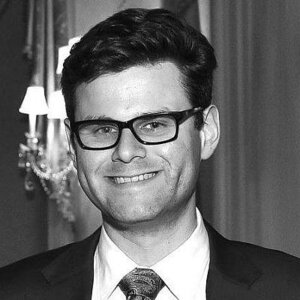The fights over Sheikh Jarrah reveal the folly of relitigating Israel’s founding

Image by Getty Images
Defending the pending evictions of as many as 300 Palestinian residents from East Jerusalem’s Sheikh Jarrah neighborhood, Jerusalem Deputy Mayor Aryeh King rhetorically asked: “If you are the owner of the property, and someone was squatting on your property, wouldn’t you have the right to take him from your property?”
But the story is more complicated than that. Jerusalem is currently engulfed by protests as the city awaits the Israeli High Court’s—now postponed—final decision over who rightfully owns these Sheikh Jarrah homes.
King’s comment encapsulates the right-wing Israeli case against Palestinian residents of Sheikh Jarrah: the locals are squatters defying the rights of the land’s legitimate Jewish owners. It is an odd line for King and others to take — because it can easily be turned on its head against Israel.
Sheikh Jarrah was once home to a Jewish community, which purchased land in the 1870s in order to be close to the supposed site of the tomb of Shimon HaTzadik, a rabbi and Jewish High priest from antiquity. But after the First Arab-Israeli War in 1948, as with dozens of other communities, Sheikh Jarrah fell under Jordanian occupation, and the neighborhood was repopulated by the Jordanian government and the United Nations with Palestinian refugees. However when Israel wrested East Jerusalem from Jordan in 1967, Jews began to reassert their ownership claims.
The Israeli Jewish view on Sheikh Jarrah — that it is built upon land that rightfully belongs to Jews — is not without any historical foundation. But the rights of its Palestinian residents bely another side of the history, which Israelis currently pushing legal claims might be inclined to ignore.
In the years following 1948, the Jordanian Custodian of Enemy Property administered Sheikh Jarrah. In 1956, through an agreement with Jordan and UNRWA— the UN agency for Palestinian refugees — 28 Palestinian families were resettled in the neighborhood. These families were refugees displaced during the war. Their story is part of the larger flight and expulsion of over 700,000 Palestinians that took place amid Israel’s inception. Just over the Green Line from Sheikh Jarrah, it is estimated that 30% of predominantly Jewish West Jerusalem real estate was owned by Arabs before 1948.
The Palestinian families’ arrangement with UNRWA and the Jordanian government stipulated that they cede their refugee assistance in exchange for three years of nominal rent payments, after which point the lease would be extended for thirty years, followed by an additional thirty-three. Additionally, the families assert that the Jordanian government would transfer legal title to the property, though ownership was never actually handed over.
Despite this, an Israeli court rejected Jewish claims against Sheikh Jarrah’s Palestinian residents in in 1976, citing the UNRWA-Jordan agreement. Six years later, settler organizations filed a lawsuit against the local Palestinians and an attorney — who did not represent all of the families — drafted an agreement, designating the residents as “protected tenants,” thus requiring them to pay rent to the Jewish groups.
Approaching the Sheikh Jarrah case from the perspective that Jews owned property in the neighborhood before Jordan took control over it raises another question: why should Palestinians not be allowed to return to areas in Israel from which they fled or were expelled in 1948-49?
There is a lot at play in the decades long dispute over Sheikh Jarrah and East Jerusalem writ large. There is, of course, the expansionist desire among some Israeli officials to solidify the Jewish presence in East Jerusalem, thereby disrupting the contiguity of Jerusalem’s Palestinian neighborhoods with the Old City and a future State of Palestine centered on the West Bank. This is illustrated in comments from city officials like Deputy Mayor King about creating “layers of Jews” throughout East Jerusalem, as well as urban planning proposals to that effect, contravening Israeli Foreign Ministry claims that Sheikh Jarrah is merely a private real estate dispute without political or nationalistic dimensions.
More fundamentally, however, there is a belief, reflected in different ways on the Israeli and Palestinian sides that the work of 1948 is incomplete.
From the Palestinian perspective, this means continued appeals to an infeasible return of refugees — now numbering in the millions — and increasing calls for utopian one-state solutions. This is frequently and justifiably, cited as an obstacle to final status agreements.
But the Palestinians are not the only ones who want to revisit the pre-1948 era. The right-wing Israeli ambition, on full display in East Jerusalem, Hebron and elsewhere, is an effort to reassert an old order nearly a century gone by, often at the expense of Palestinians’ rights and livelihoods and Israel’s democratic vitality. And the Israeli government actually has the power to enforce its revanchism.
None of this is to say that the present policy issues and intense emotions stemming from the First Arab-Israeli War can or should be ignored. Nevertheless, the pain unleashed by the unfolding Sheikh Jarrah saga shows that attempting to forcibly reverse the events of 1948 is a fool’s errand laden with danger for all involved.
Evan Gottesman is associate director of policy and communications at Israel Policy Forum. You can find him on Twitter: @EvanGottesman.
















